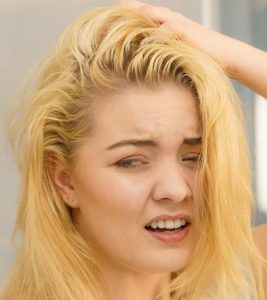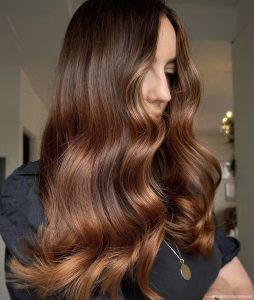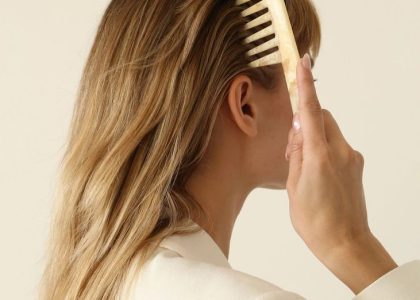Thinking about dyeing your hair? Great! But before you grab that box of dye, there’s one important question to answer: can you dye greasy hair? The answer is no, it’s not recommended to dye greasy hair. Here’s why waiting for a clean wash day is the best approach for achieving vibrant, healthy-looking colored hair.
Why Avoid Dyeing Greasy Hair?
Hair dye interacts with the natural oils on your scalp. When your hair is greasy, there’s a build-up of these oils. This can lead to several problems:
Uneven Color:
The dye may not adhere evenly to greasy hair, resulting in patchy or uneven color.
Faded Color:
Grease can act as a barrier, preventing the dye from fully penetrating the hair shaft. This can lead to quicker fading of your new color.
Scalp Irritation:
The chemicals in hair dye can irritate the scalp. A greasy scalp is more prone to irritation from these chemicals.
Benefits of Dyeing Clean Hair
Washing your hair before dyeing offers several advantages:
- Better Color Absorption: Clean hair allows the dye to penetrate the hair shaft more effectively, resulting in richer, more even color.
- Long-Lasting Results: Dye on clean hair tends to last longer than dye applied to greasy hair.
- Scalp Comfort: A clean scalp is less likely to become irritated by the dye.
How to Prep Your Hair for Dyeing
So, you’ve decided to wait for a clean wash day. Here’s how to prep your hair for optimal dyeing results:
- Wash 24-48 Hours Before: Wash your hair 1-2 days before dyeing. This removes dirt, oil, and styling products that can interfere with the dye. Avoid using conditioner, as it can also create a barrier.
- Skip the Heat Styling: Avoid heat styling your hair for at least 24 hours before dyeing. Heat can damage hair and make it more susceptible to breakage during the dyeing process.
- Do a Strand Test: Always do a strand test on a small section of inconspicuous hair before applying the dye to your entire head. This helps check for any allergic reactions or unexpected color results.
Alternatives to Chemical Dyes
If you’re concerned about the potential damage from chemical dyes, there are alternatives to consider:
- Temporary Dyes: Temporary dyes come in various forms, like rinses, sprays, and mascaras. They offer a temporary color change that washes out after a few shampoos.
- Natural Dyes: Natural dyes like henna and indigo can add color and shine to your hair. However, they may not achieve the same vibrant colors as chemical dyes and can be trickier to apply.
For best results, avoid dyeing greasy hair. Waiting for a clean wash day allows the dye to adhere evenly, resulting in a richer, longer-lasting color. By prepping your hair properly and considering alternatives to chemical dyes, you can achieve beautiful, healthy-colored hair. Remember, consulting a professional hairstylist is always a great option for personalized advice on hair coloring!
Clean Hair is Key for Successful Dyeing
So, you’ve decided to dye your hair! That’s exciting. But before you grab the dye, there’s one important step: washing your hair. Hair dye works best on clean hair, free of oils and styling products. Here’s why:
- Even Color: Clean hair allows the dye to adhere evenly, resulting in a more consistent and vibrant color throughout your hair.
- Long-Lasting Results: Dye on clean hair tends to last longer than dye applied to greasy hair. Without product buildup, the color can penetrate the hair shaft more effectively.
- Scalp Comfort: The chemicals in hair dye can irritate the scalp. A clean scalp is less likely to experience irritation from the dye.
The Wash Day Before Dye Day
Planning your dye day? Here’s how to prep your hair for the best possible results:
- Wash 1-2 Days Before: Wash your hair 24-48 hours before dyeing. This removes dirt, oil, and styling products that can interfere with the dye. Avoid using conditioner, as it can create a barrier that prevents the dye from fully absorbing.
- Skip the Heat Styling: Avoid heat styling your hair for at least 24 hours before dyeing. Heat can damage hair and make it more susceptible to breakage during the dyeing process.
- Patch Test: Always do a strand test on a small section of inconspicuous hair before applying the dye to your entire head. This helps check for any allergic reactions or unexpected color results
Considering Alternatives to Dye
If you’re concerned about the potential damage from chemical dyes, there are fun alternatives to consider:
- Temporary Dyes: Temporary dyes come in various forms, like rinses, sprays, and mascaras. They offer a temporary color change that washes out after a few shampoos, perfect for trying out a new look without commitment.
- Hair Chalks and Sprays: For a temporary pop of color, hair chalks and sprays can add a fun splash without the commitment of permanent dye.
- Colorful Hair Accessories: Accessorize your hair with colorful clips, headbands, or extensions for a temporary color change that’s fun and easy to remove.
Clean Hair Canvas for Vibrant Color
For best results, avoid dyeing greasy hair. Clean hair acts like a blank canvas, allowing the dye to adhere evenly and deposit color more vibrantly. Here’s how clean hair benefits the dyeing process:
- Optimal Absorption: Clean hair strands are free of oils and buildup, allowing the dye to penetrate deeply for richer, more even color.
- Long-Lasting Results: Without a barrier of grease, the dye pigments can effectively lock into the hair shaft, resulting in longer-lasting color that resists fading.
- Scalp Comfort: The chemicals in hair dye can irritate the scalp. A clean scalp is less likely to experience discomfort during the dyeing process.
Planning Your Dye Day
So, you’ve decided to dye your hair! Here are some tips for prepping clean hair for optimal color results:
-
Wash Day Timing: Wash your hair 1-2 days before dyeing. This removes dirt, oil, and styling products that can interfere with the dye. Avoid using conditioner, as it can create a barrier that prevents the dye from fully absorbing.
-
Skip the Heat Styling: Give your hair a break from heat styling tools for at least 24 hours before dyeing. Heat can damage hair and make it more prone to breakage during the coloring process.
-
Patch Testing is Key: Always do a strand test on a small, inconspicuous section of hair before applying the dye to your entire head. This helps check for any allergic reactions or unexpected color results.
Conclusion
By waiting to dye your hair on a clean wash day and considering alternative coloring methods, you can achieve beautiful hair color with less risk of damage. Remember, consulting a professional hairstylist is always a great option for personalized advice on hair coloring!










